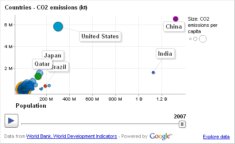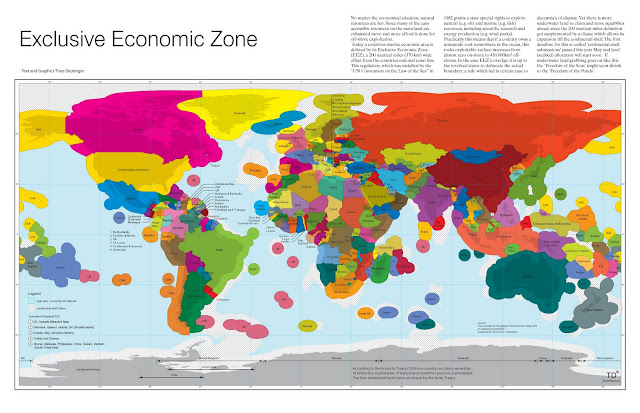Yearly archive for 2011.
Show all posts
-
Vik Mohan, Rebecca Hill, and Alasdair Harris
In FOCUS: To Live With the Sea: Reproductive Health Care and Marine Conservation in Madagascar
›July 12, 2011 // By Wilson Center StaffDownload FOCUS Issue 23: “To Live With the Sea: Reproductive Health Care and Marine Conservation in Madagascar,” from the Wilson Center.
Christine does not know how old she is. She has 16 children and lives on a remote island off the southwestern coast of Madagascar. She and her children, like other members of the Vezo ethnic group, depend entirely on the ocean for their survival. Her husband, a fisherman, struggles to catch enough to feed his family.
In this isolated area, most girls have their first child before the age of 18, and families with 10 children or more are commonplace. But since the marine conservation NGO Blue Ventures launched a family planning program in 2007, couples and women like Christine are able to make their own reproductive health choices.
Blue Ventures’ Vik Mohan, Rebecca Hill, and Alasdair Harris argue that their integrated approach, which combines reproductive health care and education with conservation and alternative livelihoods, offers these communities – and the marine environment on which they depend – the best possible chances of survival. -
World Population Day 2011: The Year of Seven Billion
›July 11, 2011 // By Schuyler NullThe UN Population Fund established World Population Day as a day of awareness about global population in 1987. As we approach seven billion just 24 years later, the UN is kicking off their 7 Billion Actions campaign, designed to raise awareness about the resource, health, and environmental challenges raised by our numbers. Population and its more detailed cousin-indicator, demography, impact the world in a great many ways – from contributing to resource scarcity and environmental destruction to creating social imbalances that can lead to civil instability.
Check out a few of New Security Beat’s most recent stories on population to get a sense of why it’s such an important but oft-simplified and misunderstood indicator and where it matters most.
Photo Credit: “World population,” courtesy of flickr user Arenamontanus.- One in Three People Will Live in Sub-Saharan Africa in 2100, Says UN
- Ten Billion: UN Updates Population Projections, Assumptions on Peak Growth Shattered
- Tunisia Predicted: Demography and the Probability of Liberal Democracy in the Greater Middle East
- Watch: Demographic Security 101 With Elizabeth Leahy Madsen
- Yemen Beyond the Headlines: Population, Health, Natural Resources, and Institutions
- Guest Contributor Michael Kugelman: Pakistan’s Population Bomb Defused?
- Dot-Mom: USAID Egypt’s Health and Population Legacy Review
- Watch: Eric Kaufmann on How Demography Is Enhancing Religious Fundamentalism
- Consumption and Global Growth: How Much Does Population Contribute to Carbon Emissions?
-
Watch ‘Dialogue’ TV on Severe Weather and Climate Change: Is There a Connection?
›This week on Dialogue, host John Milewski is joined by Heidi Cullen and Edward Maibach for a discussion on whether recent severe weather outbreaks in the United States and around the world are directly tied to the latest data on climate change. [Video Below] Dialogue is an award-winning co-production of the Woodrow Wilson International Center for Scholars and MHz Networks that explores the world of ideas through conversations with renowned public figures, scholars, journalists, and authors. The show is also available throughout the United States on MHz Networks, via broadcast and cable affiliates, as well as via DirecTV and WorldTV (G19) satellite.
Dialogue is an award-winning co-production of the Woodrow Wilson International Center for Scholars and MHz Networks that explores the world of ideas through conversations with renowned public figures, scholars, journalists, and authors. The show is also available throughout the United States on MHz Networks, via broadcast and cable affiliates, as well as via DirecTV and WorldTV (G19) satellite.
Heidi Cullen is a research scientist and correspondent for Climate Central where she also served as director of communications. Previously, she served as the Weather Channel’s first on air climate expert and is also a member of the National Oceanic and Atmospheric Administration Science Advisory Board. Edward Maibach joined the George Mason University faculty in 2007 to create the Center for Climate Change Communication. He is also a principal investigator of several climate change education grants funded by the National Science Foundation and the Robert Wood Johnson Foundation.
Find out where to watch Dialogue where you live via MHz Networks. You can send questions or comments on the program to dialogue@wilsoncenter.org.
Rare Earths No More? Mineral Discoveries a Potential Game-Changer for East Asia
›
July 7, 2011 // By Schuyler Null
Discoveries announced in a journal article over the weekend may prove a game-changer for global rare earth supplies and recent diplomatic maneuvering in East Asia between China, Japan, Vietnam, and the United States. A team of researchers from Japan’s Agency for Marine-Earth Science and Technology published findings in Nature Geoscience that indicate vast underwater reserves of rare earth minerals are scattered across a huge swath of the Pacific, including south and east of Japan. The U.S. Geological survey estimates current global reserves of rare earth minerals at about 110 million tons; Yasuhiro Kato, the lead author of the Japanese team, told Reuters that the sites surveyed could contain an additional 80 to 100 billion metric tons (yes, with a “b”) of the valuable resources.
The authors write that an “area of just one square kilometer, surrounding one of the sampling sites, could provide one-fifth of the current annual world consumption of these elements.” The team collected data from 78 sites in total, with the largest concentrations centered east of the Hawaiian and Polynesian islands (see a map of the surveyed areas here).
Resource Relationships
The discovery could prove crucial for Japan, as it has been seeking alternative sources of rare earth minerals after an embargo earlier this year by China, which controls 97 percent of the world’s current supply. The embargo (which China denied) was imposed in October of last year after the Japanese navy arrested the captain of a Chinese fishing boat, which was alleged to be encroaching on Japanese territorial waters. China’s response increased tensions across the region and produced a flurry of warnings in Washington over the security of U.S. supplies.
Although the embargo was later lifted, Japan and Vietnam reached an agreement for development of Vietnamese mines in November. The tensions sparked by the encounter also spread to the South China Sea where Chinese, Vietnamese, and Filipino forces have stepped up their jockeying over disputed and resource-rich waters to the highest levels in years. Vietnamese and Chinese naval forces recently held mirror exercises, and Filipino officials invoked a 1950-era defense pact with the United States. Chinese Vice Foreign Minister Cui Tiankai told reporters in June: “I believe the individual countries are actually playing with fire, and I hope the fire will not be drawn to the United States.”
Secretary of State Hillary Clinton called concerns over navigability and Chinese insistence on bilateral (as opposed to multilateral) negotiations in the South China Sea a matter of “national interest” for the United States last year.
The Japanese team’s discovery has the potential to significantly impact the power dynamics behind these tensions. China has used its rare earth monopoly to pressure Japan and the United States, which in turn may have also helped embolden its recent more aggressive maritime policies. If the new rare earth discoveries prove viable, that calculus could change considerably.
However serious questions remain: Many of the discoveries lie outside of established exclusive economic zones, so who has the rights to mine them? They’re also between 11,500 and 20,000 feet below the surface – how long before we have the technologies to extract them at an industrial scale? And how safe – both for humans and the environment – will those processes be? Aboveground rare earth mines are some of the most damaging to the environment – part of the claimed reason China curbed overall exports earlier this year, which drove up global prices and drew the ire of the World Trade Organization.
For more on the importance of rare earth minerals to the defense and electronics industries, see New Security Beat’s “Rare Earth: A New Roadblock for Sustainable Energy?” and “Reading Radar: The Mineral Security of the United States.” For more on the exclusive economic zones map, see “Eye on Environmental Security: Natural Resource Frontiers at Sea;” and on the South China Sea and what it reveals about future diplomatic fault lines between the United States and China, see “U.S. v. China: The Global Battle for Hearts Minds and Resources.”
Sources: Asia Sentinel, The Atlantic, BBC, Government Accounting Office, Nature Geoscience, The New York Times, Reuters, Tech News Daily, U.S. Department of State.
Photo Credit: Adapted from “USS Mustin underway in the Pacific Ocean,” courtesy of flickr user Official U.S. Navy Imagery, and “Exclusive Economic Zone,” used with permission courtesy of Theo Deutinger and TD Architects.
The authors write that an “area of just one square kilometer, surrounding one of the sampling sites, could provide one-fifth of the current annual world consumption of these elements.” The team collected data from 78 sites in total, with the largest concentrations centered east of the Hawaiian and Polynesian islands (see a map of the surveyed areas here).
Resource Relationships
The discovery could prove crucial for Japan, as it has been seeking alternative sources of rare earth minerals after an embargo earlier this year by China, which controls 97 percent of the world’s current supply. The embargo (which China denied) was imposed in October of last year after the Japanese navy arrested the captain of a Chinese fishing boat, which was alleged to be encroaching on Japanese territorial waters. China’s response increased tensions across the region and produced a flurry of warnings in Washington over the security of U.S. supplies.
Although the embargo was later lifted, Japan and Vietnam reached an agreement for development of Vietnamese mines in November. The tensions sparked by the encounter also spread to the South China Sea where Chinese, Vietnamese, and Filipino forces have stepped up their jockeying over disputed and resource-rich waters to the highest levels in years. Vietnamese and Chinese naval forces recently held mirror exercises, and Filipino officials invoked a 1950-era defense pact with the United States. Chinese Vice Foreign Minister Cui Tiankai told reporters in June: “I believe the individual countries are actually playing with fire, and I hope the fire will not be drawn to the United States.”
Secretary of State Hillary Clinton called concerns over navigability and Chinese insistence on bilateral (as opposed to multilateral) negotiations in the South China Sea a matter of “national interest” for the United States last year.
The Japanese team’s discovery has the potential to significantly impact the power dynamics behind these tensions. China has used its rare earth monopoly to pressure Japan and the United States, which in turn may have also helped embolden its recent more aggressive maritime policies. If the new rare earth discoveries prove viable, that calculus could change considerably.
However serious questions remain: Many of the discoveries lie outside of established exclusive economic zones, so who has the rights to mine them? They’re also between 11,500 and 20,000 feet below the surface – how long before we have the technologies to extract them at an industrial scale? And how safe – both for humans and the environment – will those processes be? Aboveground rare earth mines are some of the most damaging to the environment – part of the claimed reason China curbed overall exports earlier this year, which drove up global prices and drew the ire of the World Trade Organization.
For more on the importance of rare earth minerals to the defense and electronics industries, see New Security Beat’s “Rare Earth: A New Roadblock for Sustainable Energy?” and “Reading Radar: The Mineral Security of the United States.” For more on the exclusive economic zones map, see “Eye on Environmental Security: Natural Resource Frontiers at Sea;” and on the South China Sea and what it reveals about future diplomatic fault lines between the United States and China, see “U.S. v. China: The Global Battle for Hearts Minds and Resources.”
Sources: Asia Sentinel, The Atlantic, BBC, Government Accounting Office, Nature Geoscience, The New York Times, Reuters, Tech News Daily, U.S. Department of State.
Photo Credit: Adapted from “USS Mustin underway in the Pacific Ocean,” courtesy of flickr user Official U.S. Navy Imagery, and “Exclusive Economic Zone,” used with permission courtesy of Theo Deutinger and TD Architects.
Keith Schneider, Circle of Blue
Double Choke Point: Demand for Energy Tests Water Supply and Economic Stability in China and the U.S.
›
The original version of this article, by Keith Schneider, appeared on Circle of Blue.
The coal mines of Inner Mongolia, China, and the oil and gas fields of the northern Great Plains in the United States are separated by 11,200 kilometers (7,000 miles) of ocean and 5,600 kilometers (3,500 miles) of land.
But, in form and function, the two fossil fuel development zones – the newest and largest in both nations – are illustrations of the escalating clash between energy demand and freshwater supplies that confront the stability of the world’s two biggest economies. How each nation responds will profoundly influence energy prices, food production, and economic security not only in their domestic markets, but also across the globe.
Both energy zones require enormous quantities of water – to mine, process, and use coal; to drill, fracture, and release oil and natural gas from deep layers of shale. Both zones also occur in some of the driest regions in China and the United States. And both zones reflect national priorities on fossil fuel production that are causing prodigious damage to the environment and putting enormous upward pressure on energy prices and inflation in China and the United States, say economists and scholars.
“To what degree is China taking into account the rising cost of energy as a factor in rising overall prices in their economy?” David Fridley said in an interview with Circle of Blue. Fridley is a staff scientist in the China Energy Group at Lawrence Berkeley National Laboratory in California. “What level of aggregate energy cost increases can China sustain before they tip over?”
“That’s where China’s next decade is heading – accommodating rising energy costs,” he added. “We’re already there in the United States. In 13 months, we’ll be fully in recession in this country; 9 percent of our GDP is energy costs. That’s higher than it’s been. When energy costs reach eight to nine percent of GDP, as they have in 2011, the economy is pushed into recession within a year.”
Continue reading on Circle of Blue.
Photo Credit: Used with permission, courtesy of J. Carl Ganter/Circle of Blue. In Ningxia Province, one of China’s largest coal producers, supplies of water to farmers have been cut 30 percent since 2008.
The coal mines of Inner Mongolia, China, and the oil and gas fields of the northern Great Plains in the United States are separated by 11,200 kilometers (7,000 miles) of ocean and 5,600 kilometers (3,500 miles) of land.
But, in form and function, the two fossil fuel development zones – the newest and largest in both nations – are illustrations of the escalating clash between energy demand and freshwater supplies that confront the stability of the world’s two biggest economies. How each nation responds will profoundly influence energy prices, food production, and economic security not only in their domestic markets, but also across the globe.
Both energy zones require enormous quantities of water – to mine, process, and use coal; to drill, fracture, and release oil and natural gas from deep layers of shale. Both zones also occur in some of the driest regions in China and the United States. And both zones reflect national priorities on fossil fuel production that are causing prodigious damage to the environment and putting enormous upward pressure on energy prices and inflation in China and the United States, say economists and scholars.
“To what degree is China taking into account the rising cost of energy as a factor in rising overall prices in their economy?” David Fridley said in an interview with Circle of Blue. Fridley is a staff scientist in the China Energy Group at Lawrence Berkeley National Laboratory in California. “What level of aggregate energy cost increases can China sustain before they tip over?”
“That’s where China’s next decade is heading – accommodating rising energy costs,” he added. “We’re already there in the United States. In 13 months, we’ll be fully in recession in this country; 9 percent of our GDP is energy costs. That’s higher than it’s been. When energy costs reach eight to nine percent of GDP, as they have in 2011, the economy is pushed into recession within a year.”
Continue reading on Circle of Blue.
Photo Credit: Used with permission, courtesy of J. Carl Ganter/Circle of Blue. In Ningxia Province, one of China’s largest coal producers, supplies of water to farmers have been cut 30 percent since 2008.
Consumption and Global Growth: How Much Does Population Contribute to Carbon Emissions?
›
July 6, 2011 // By Schuyler Null
 When discussing long-term population trends on this blog, we’ve mainly focused on demography’s interaction with social and economic development, the environment, conflict, and general state stability. In the context of climate change, population also plays a major role, but as Brian O’Neill of the National Center for Atmospheric Research put it at last year’s Society of Environmental Journalists conference, population is neither a silver bullet nor a red herring in the climate problem. Though it plays a major role, population is not the largest driver of global greenhouse gases emissions – consumption is.
When discussing long-term population trends on this blog, we’ve mainly focused on demography’s interaction with social and economic development, the environment, conflict, and general state stability. In the context of climate change, population also plays a major role, but as Brian O’Neill of the National Center for Atmospheric Research put it at last year’s Society of Environmental Journalists conference, population is neither a silver bullet nor a red herring in the climate problem. Though it plays a major role, population is not the largest driver of global greenhouse gases emissions – consumption is.In Prosperity Without Growth, first published by the UK government’s Sustainable Development Commission and later by EarthScan as a book, economist Tim Jackson writes that it is “delusional” to rely on capitalism to transition to a “sustainable economy.” Because a capitalist economy is so reliant on consumption and constant growth, he concludes that it is not possible for it to limit greenhouse gas emissions to only 450 parts per million by 2050.
It’s worth noting that the UN has updated its population projections since Jackson’s original article. The medium variant projection for average annual population growth between now and 2050 is now about 0.75 percent (up from 0.70). The high variant projection bumps that growth rate up to 1.08 percent and the low down to 0.40 percent.
Either way, though population may play a major role in the development of certain regions, it plays a much smaller role in global CO2 emissions. In a fairly exhaustive post, Andrew Pendleton from Political Climate breaks down the math of Jackson’s most interesting conclusions and questions, including the role of population. He writes that the larger question is what will happen with consumption levels and technological advances:
The argument goes like this. Growth (or decline) in emissions depend by definition on the product of three things: population growth (numbers of people), growth in income per person ($/person), and on the carbon intensity of economic activity (kgCO2/$). This last measure depends crucially on technology, and shows how far growth has been “decoupled” from carbon emissions. If population growth and economic growth are both positive, then carbon intensity must shrink at a faster rate than the other two if we are to slash emissions sufficiently.Pendleton also brings up the prickly question of global inequity and how that impacts Jackson’s long-term assumptions:
Jackson calculates that to reach the 450 ppm stabilization target, carbon emissions would have to fall from today’s levels at an average rate of 4.9 percent a year every year to 2050. So overall, carbon intensity has to fall enough to get emissions down by that amount and offset population and income growth. Between now and 2050, population is expected to grow at an average of 0.7 percent and Jackson first considers an extrapolation of the rate of global economic growth since 1990 – 1.4 percent a year – into the future. Thus, to reach the target, carbon intensity will have to fall at an average rate of 4.9 + 0.7 + 1.4 = 7.0 percent a year every year between now and 2050. This is about 10 times the historic rate since 1990.
Pause at this stage, and take note that if there were no further economic growth, carbon intensity would still have to fall at a rate of 4.9 + 0.7 = 5.6 percent, or about eight times the rate over the last 20 years. To his credit, Jackson acknowledges this – as he puts it, decoupling is vital, with or without growth. Decoupling will require both huge innovation and investment in energy efficiency and low-carbon energy technologies. One question, to which we’ll return later, is whether and how you can get this if there is no economic growth.
But Jackson doesn’t stop there. He goes on to point out that taking historical economic growth as a basis for the future means you accept a very unequal world. If we are serious about fairness, and poor countries catching up with rich countries, then the challenge is much, much bigger. In a scenario where all countries enjoy an income comparable with the European Union average by 2050 (taking into account 2.0 percent annual growth in that average between now and 2050 as well), then the numbers for the required rate of decoupling look like this: 4.9 percent a year cut in carbon emissions + 0.7 percent a year to offset population growth + 5.6 percent a year to offset economic growth = 11.2 percent per year, or about 15 times the historical rate.To further complicate how population figures into all this, Brian O’Neill’s Proceedings of the National Academy of Sciences article, “Global Demographic Trends and Future Carbon Emissions,” shows that urbanization and aging trends will have differential – and potentially offsetting – impacts on carbon emissions. Aging, particularly in industrialized countries, will reduce carbon emissions by up to 20 percent in the long term. On the other hand, urbanization, particularly in developing countries, could increase emissions by 25 percent.
What do you think? Is infinite growth possible? If so, how do you reconcile that with its effects on “spaceship Earth?” Do you rely on technology to improve efficiency? Do you call it a loss and hope the benefits of growth are worth it?
Sources: Political Climate, Proceedings of the National Academy of Sciences, Prosperity Without Growth (Jackson).
Robert Jenkins, OpenDemocracy.net
Women, Food Security, and Peacebuilding: From Gender Essentialism To Market Fundamentalism
›
July 5, 2011 // By Wilson Center Staff
That women’s engagement in resolving and recovering from conflict is crucial to sustainable peace has been an article of faith, and an element of international law, since the UN Security Council passed Resolution 1325 in 2000. It took a decade of missed opportunities, however, for the UN to develop a systematic action plan for redeeming the promise of 1325. The September 2010 Report of the Secretary-General on women’s participation in peacebuilding contains a concrete set of commitments for UN actors working in post-conflict settings.
Top 10 Posts for June 2011
›
Chairman of the Joint Chief of Staff Admiral Mike Mullen joined his former staffers (see “In Search of a New Security Narrative“) on the New Security Beat top 10 list last month after speaking at the Wilson Center in the inaugural Lee Hamilton lecture. Richard Cincotta’s look at Tunisia’s demographics also remained popular, joined by several posts on climate, security, and development, including ECSP’s “Yemen Beyond the Headlines” event.
1. In Search of a New Security Narrative: The National Conversation at the Wilson Center
2. Tunisia’s Shot at Democracy: What Demographics and Recent History Tell Us
3. Connections Between Climate and Stability: Lessons From Asia and Africa
4. Admiral Mullen: “Security Means More Than Defense,” Inaugural Lee Hamilton Lecture at the Wilson Center
5. Climate Adaptation, Development, and Peacebuilding in Fragile States: Finding the Triple-Bottom Line
6. One in Three People Will Live in Sub-Saharan Africa in 2100, Says UN
7. India’s Maoists: South Asia’s “Other” Insurgency
8. Eye on Environmental Security: Where Does It Hurt? Climate Vulnerability Index, Momentum Magazine
9. Helping Hands: An Integrated Approach to Development
10. Yemen Beyond the Headlines: Losing the Battle to Balance Water Supply and Population Growth
1. In Search of a New Security Narrative: The National Conversation at the Wilson Center
2. Tunisia’s Shot at Democracy: What Demographics and Recent History Tell Us
3. Connections Between Climate and Stability: Lessons From Asia and Africa
4. Admiral Mullen: “Security Means More Than Defense,” Inaugural Lee Hamilton Lecture at the Wilson Center
5. Climate Adaptation, Development, and Peacebuilding in Fragile States: Finding the Triple-Bottom Line
6. One in Three People Will Live in Sub-Saharan Africa in 2100, Says UN
7. India’s Maoists: South Asia’s “Other” Insurgency
8. Eye on Environmental Security: Where Does It Hurt? Climate Vulnerability Index, Momentum Magazine
9. Helping Hands: An Integrated Approach to Development
10. Yemen Beyond the Headlines: Losing the Battle to Balance Water Supply and Population Growth










